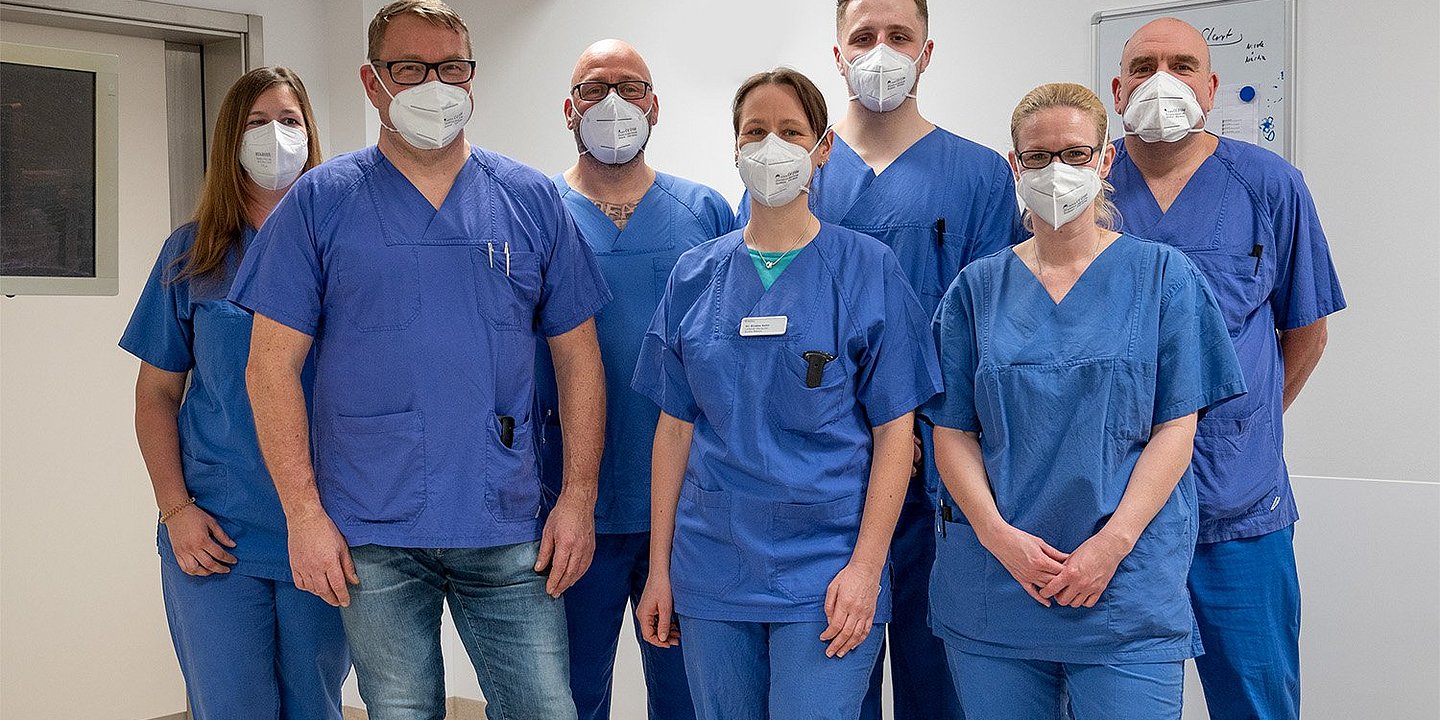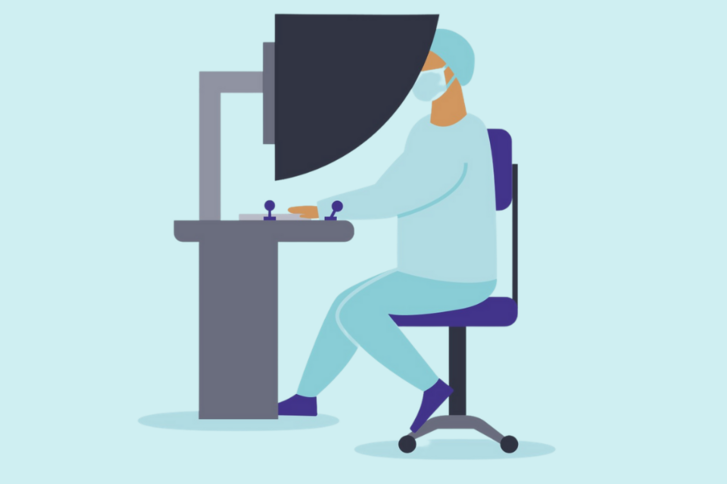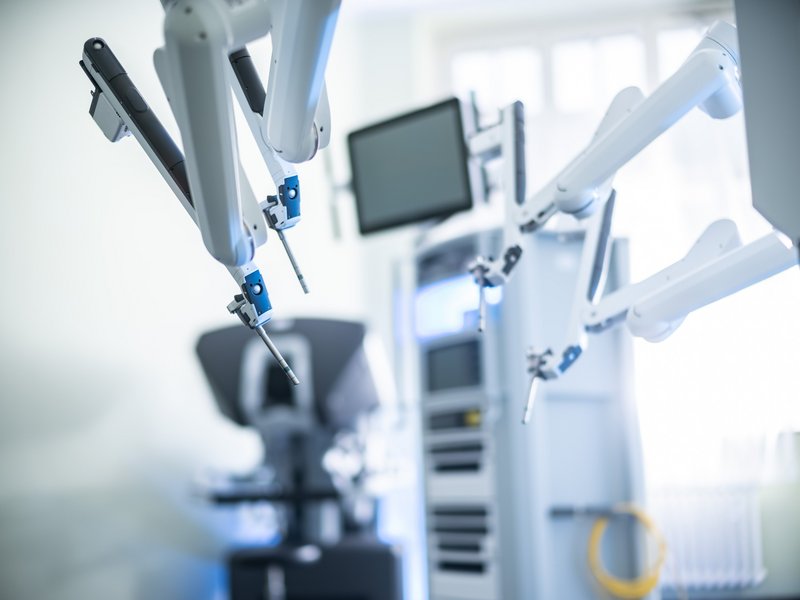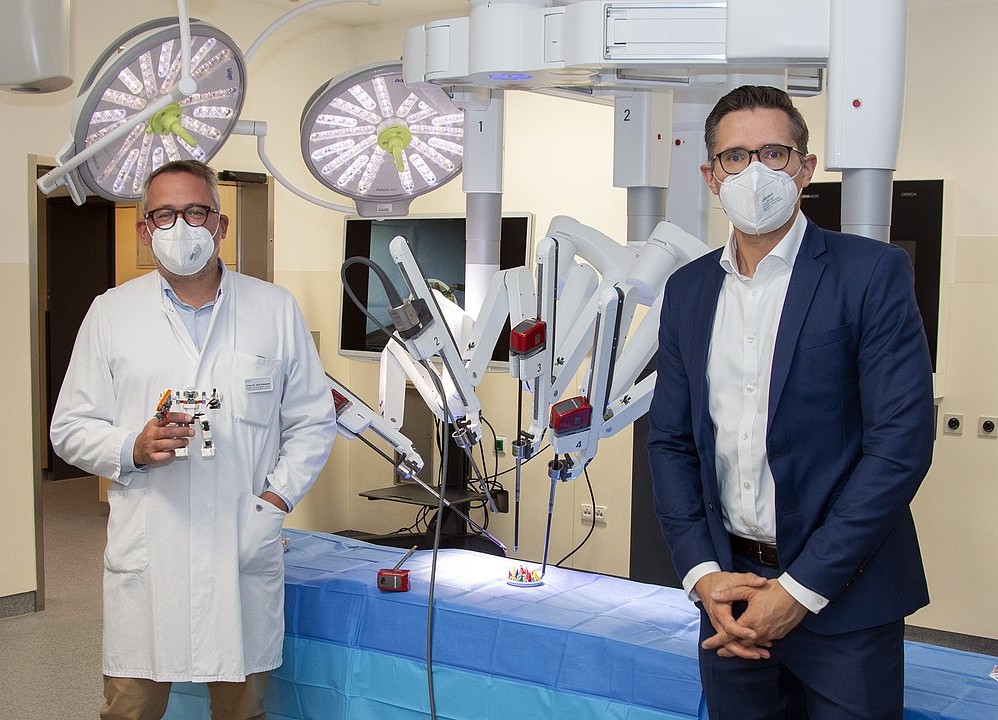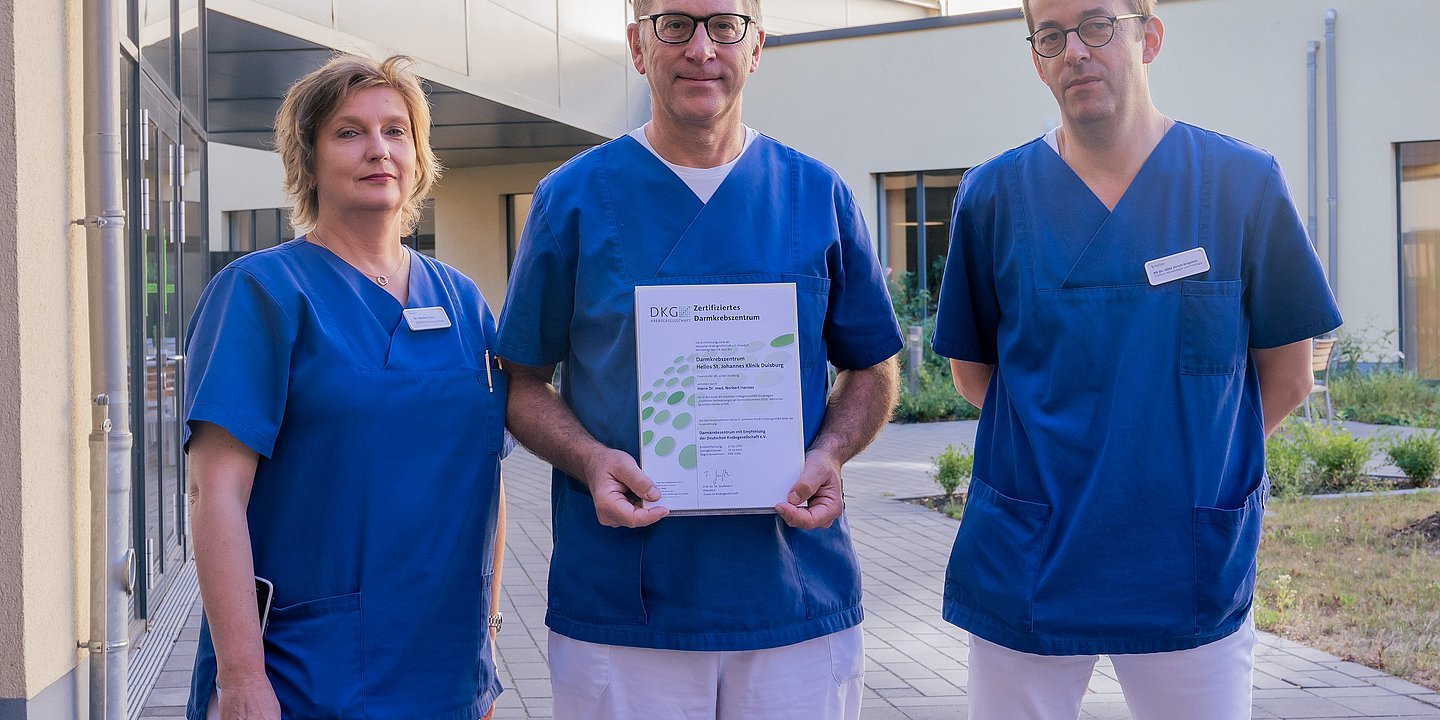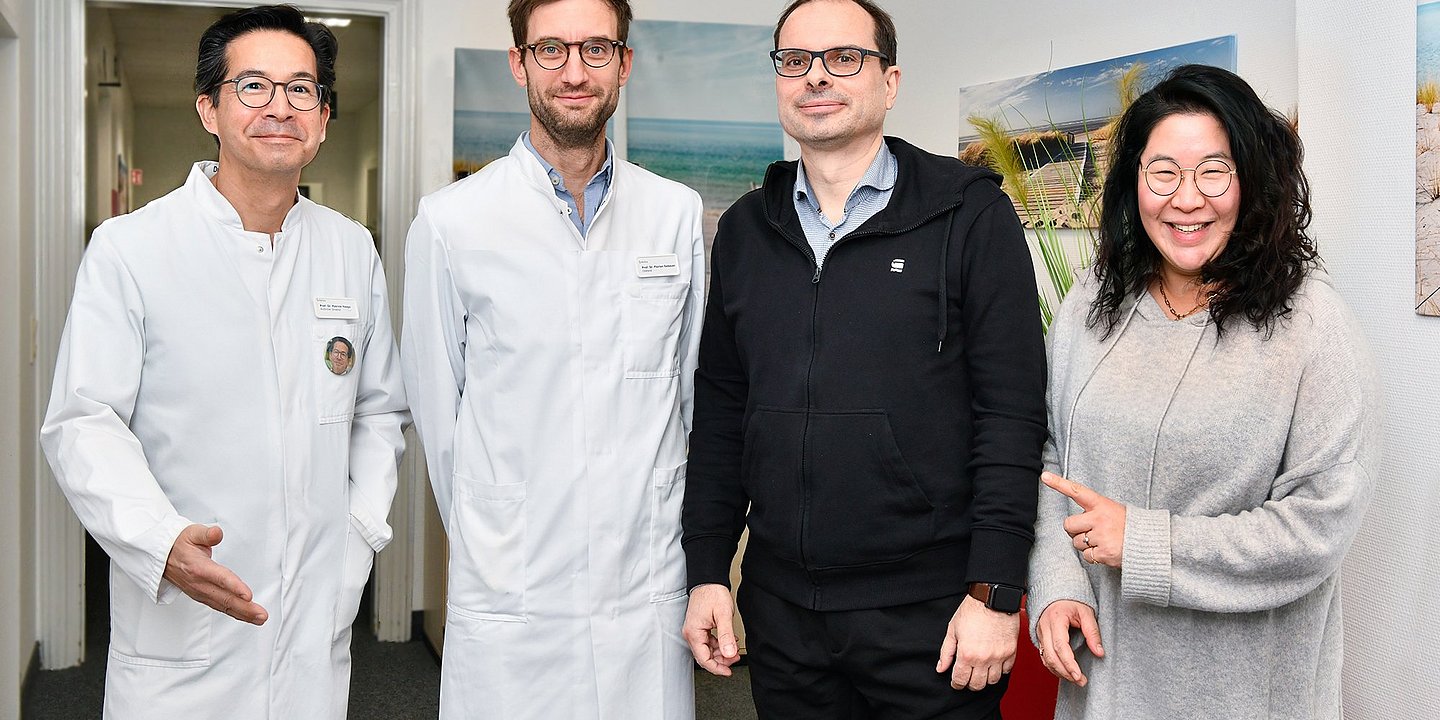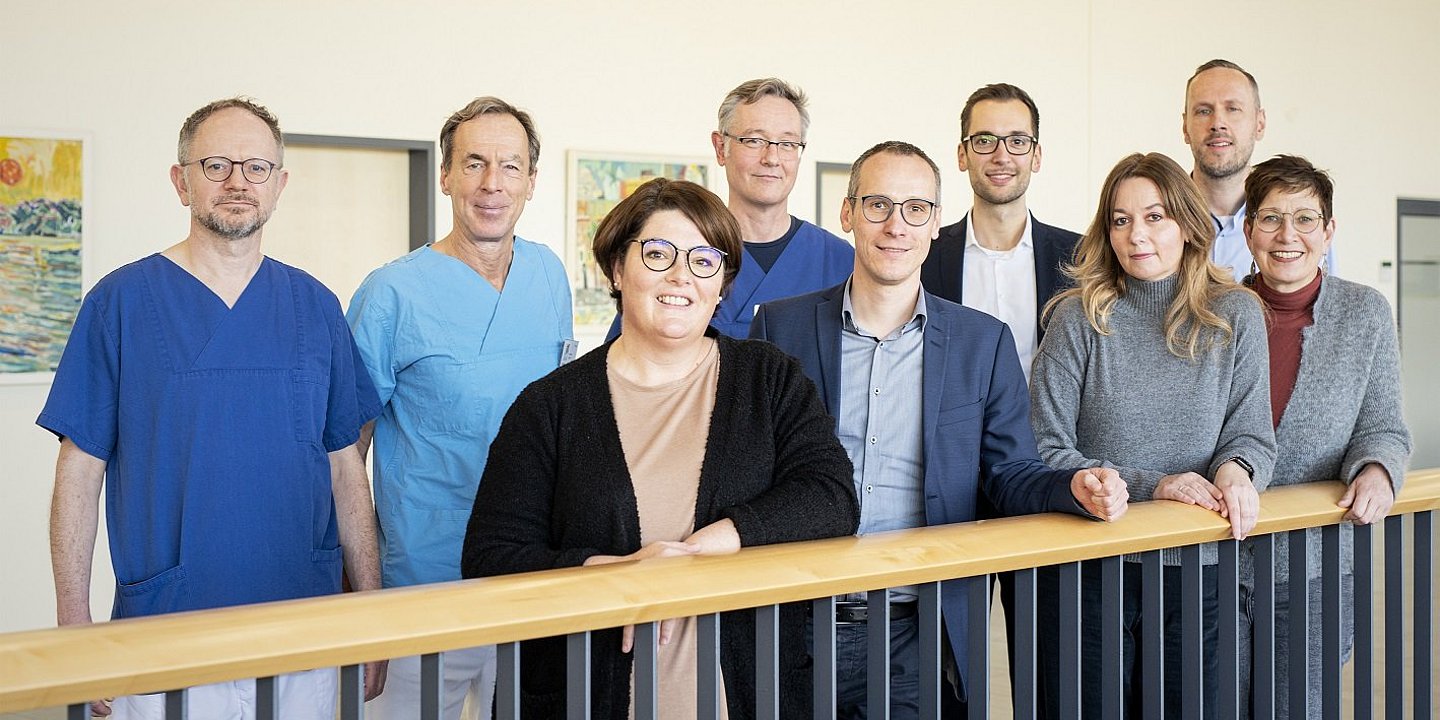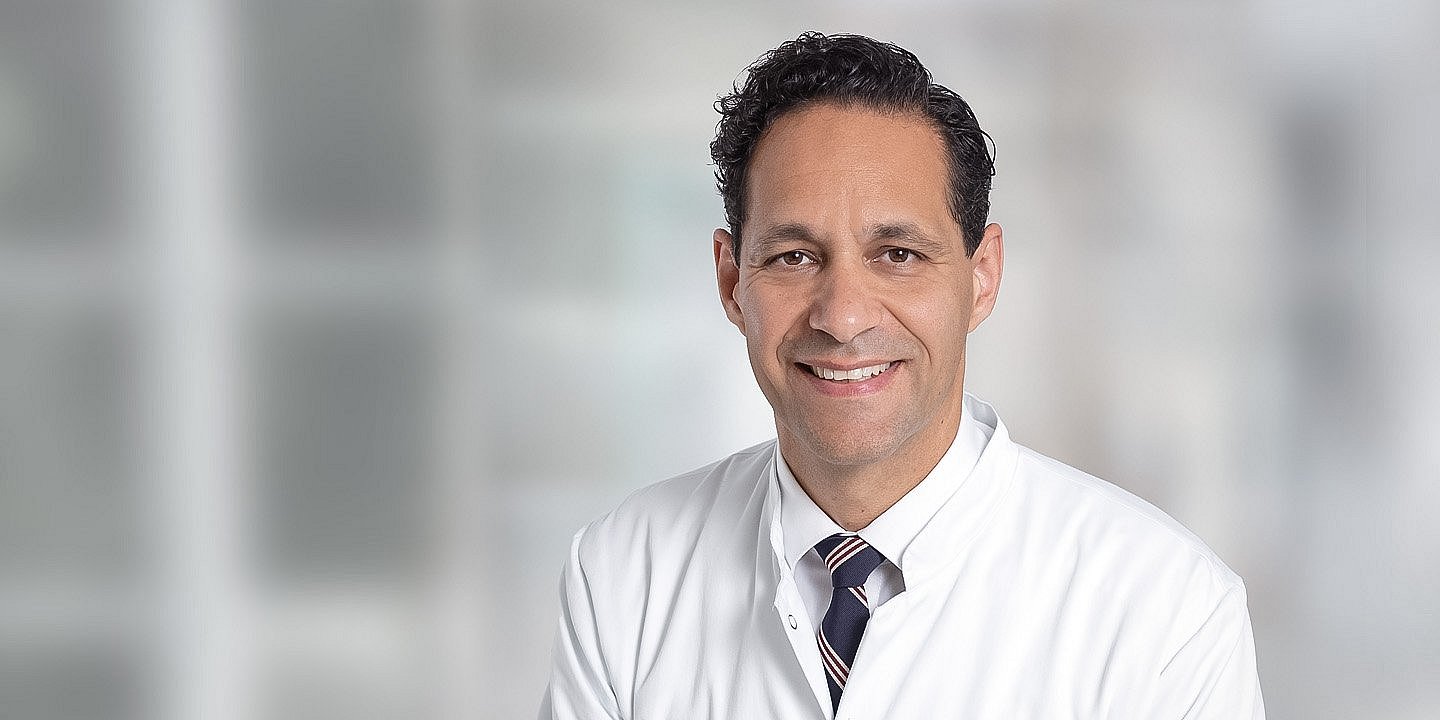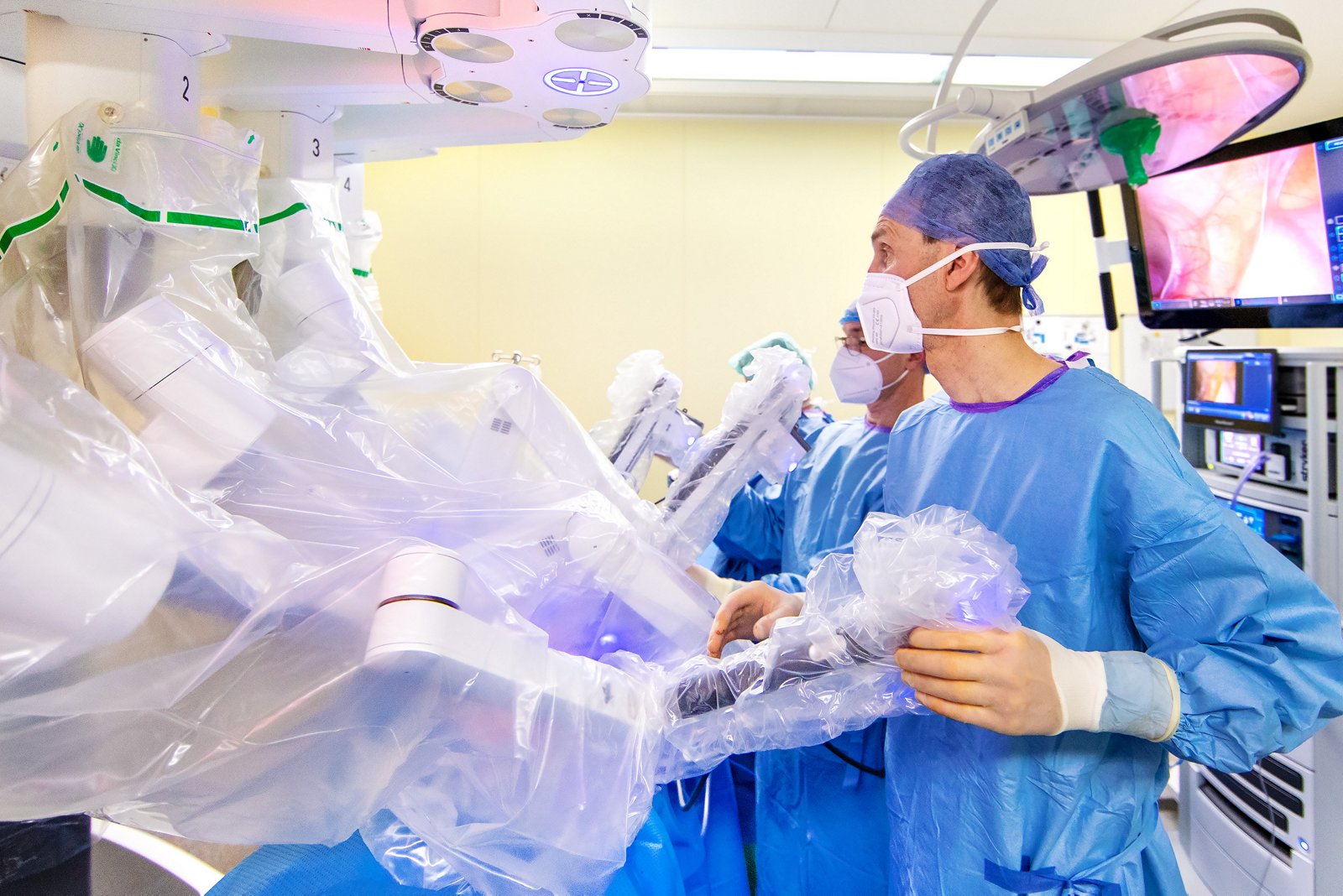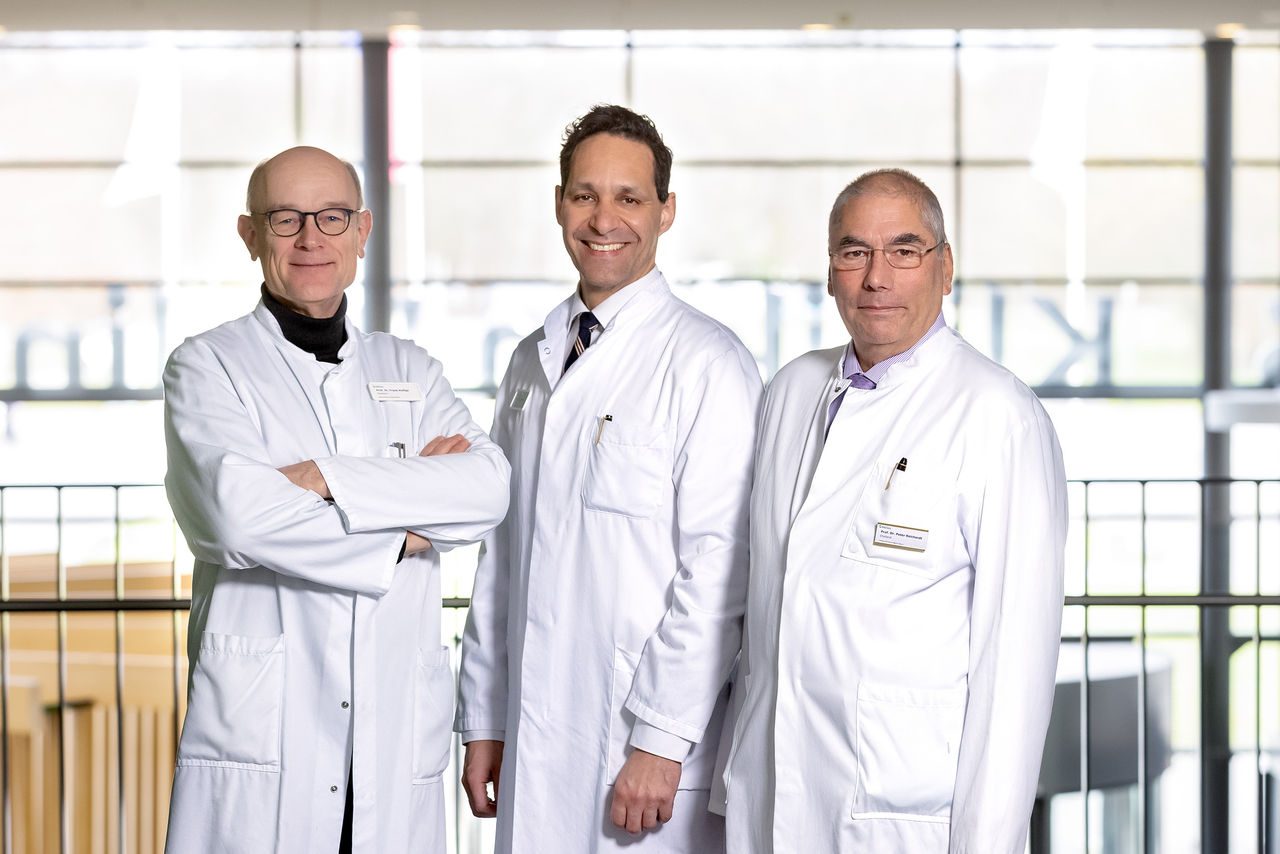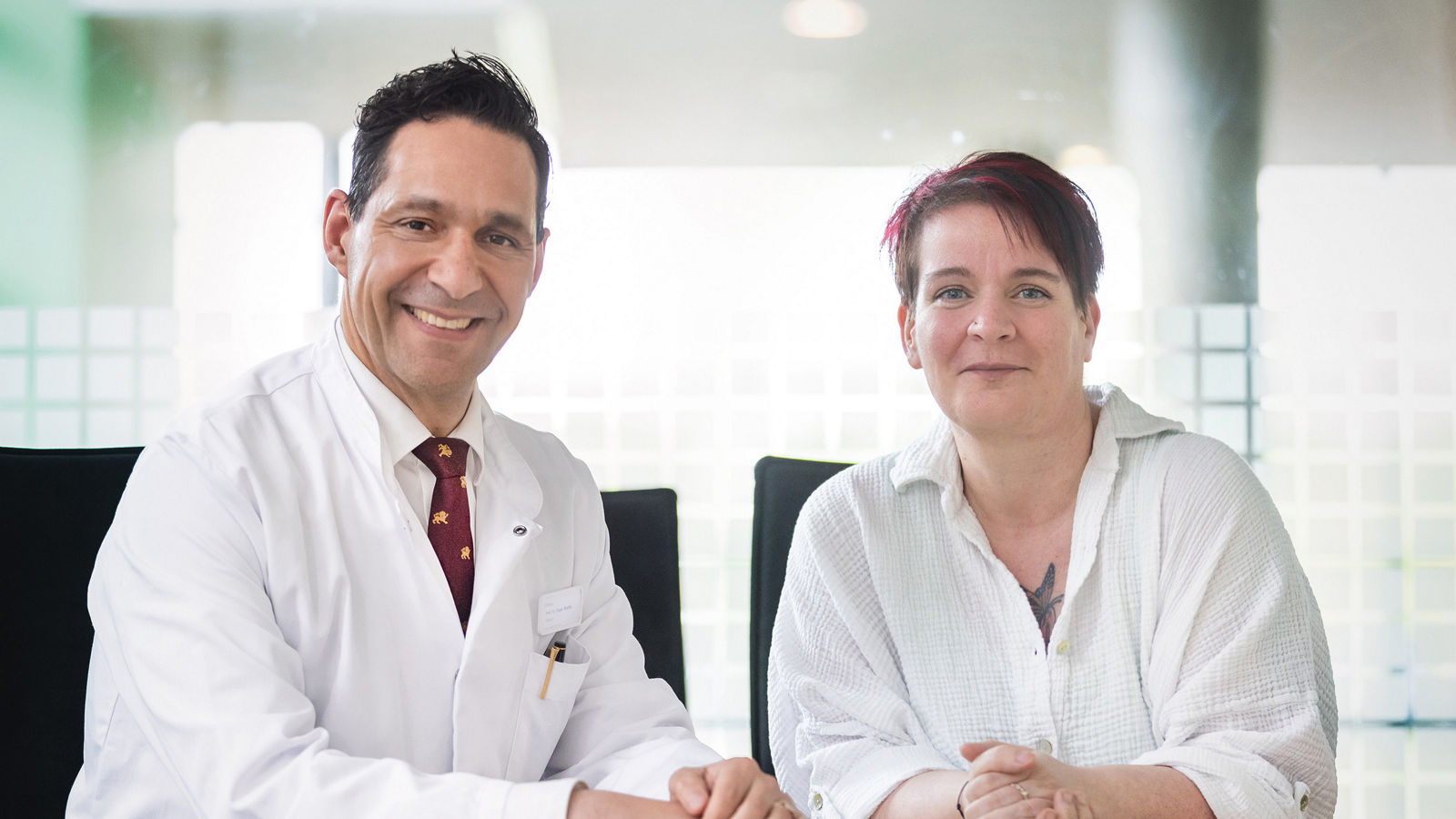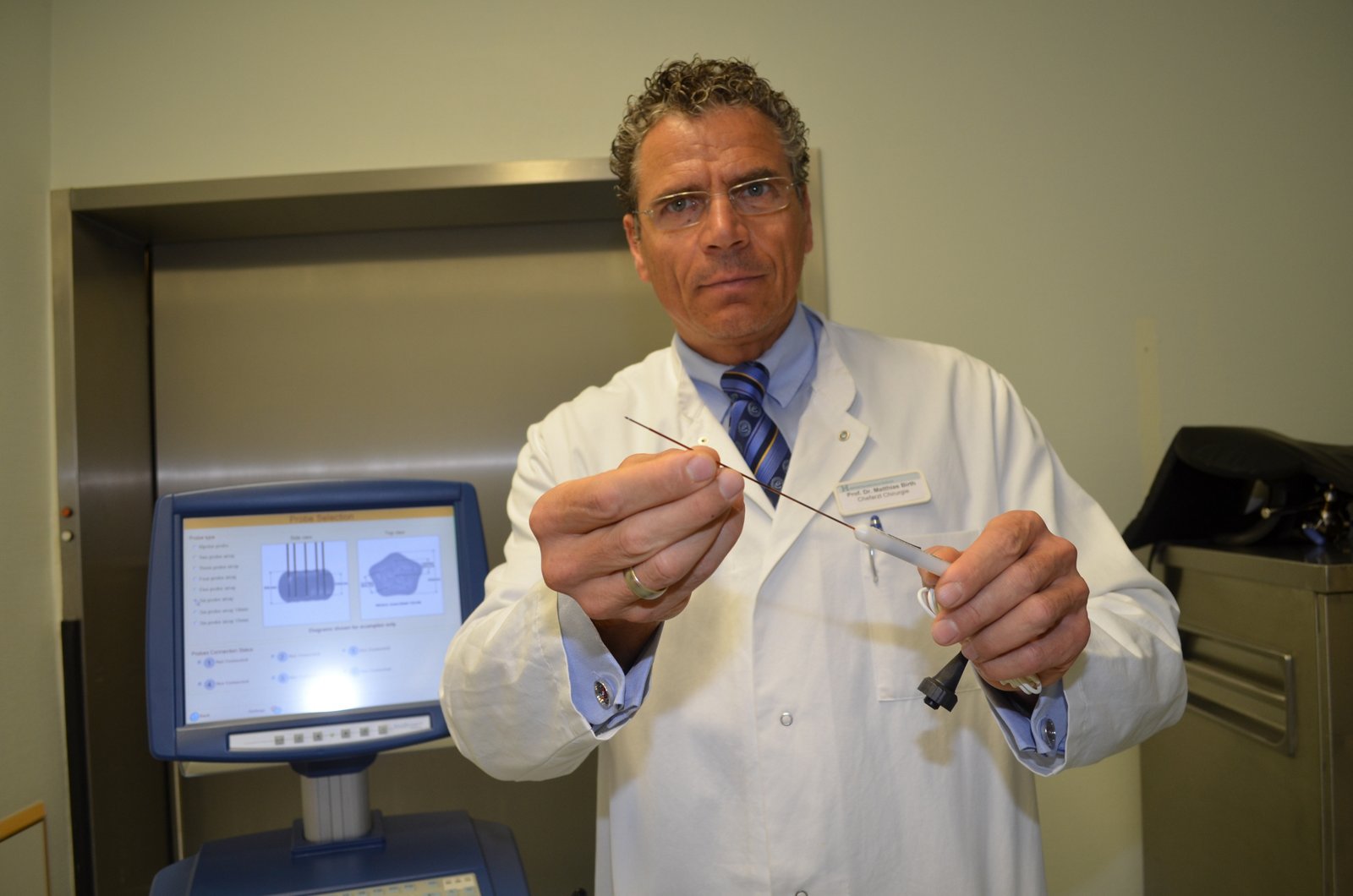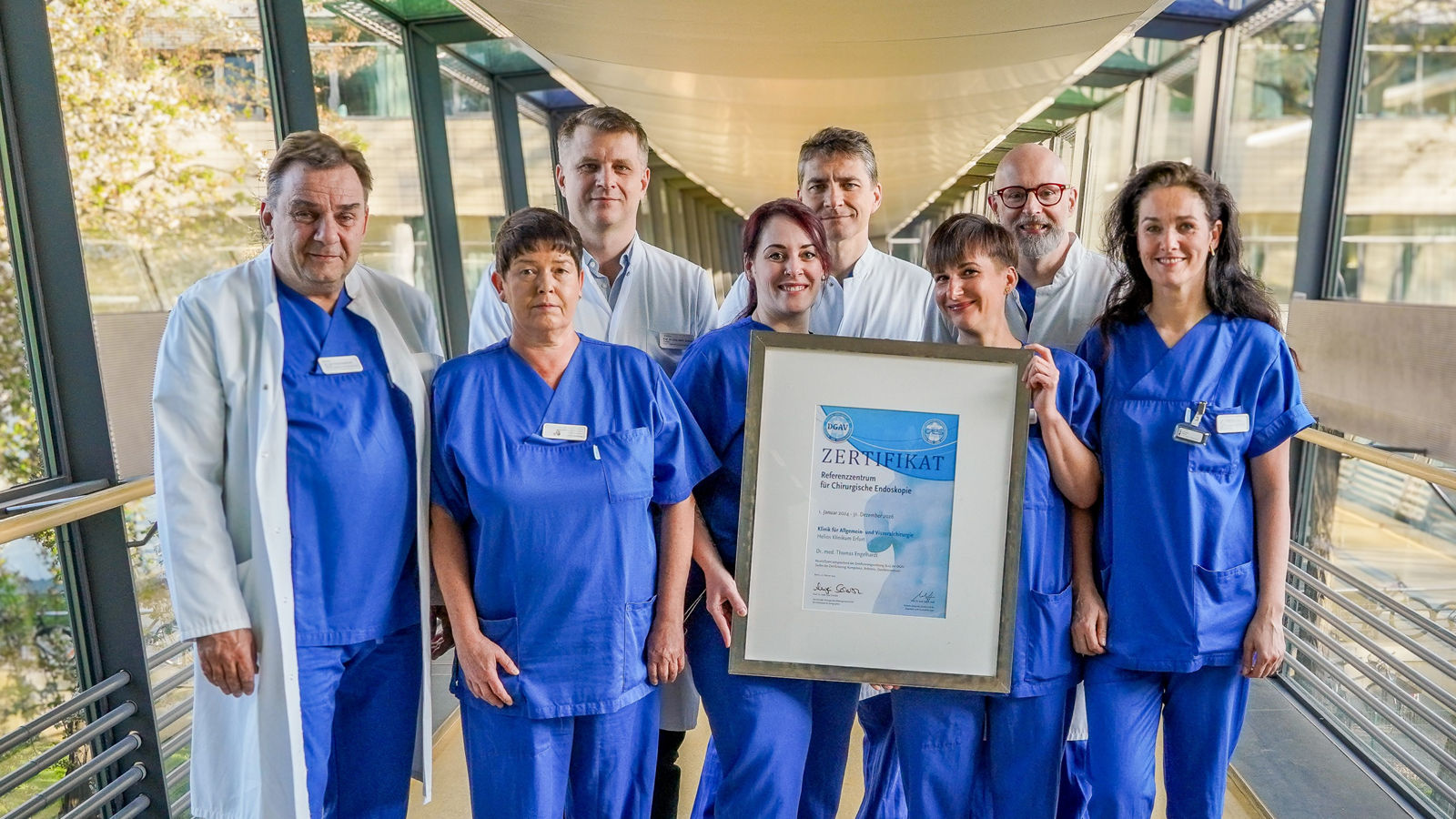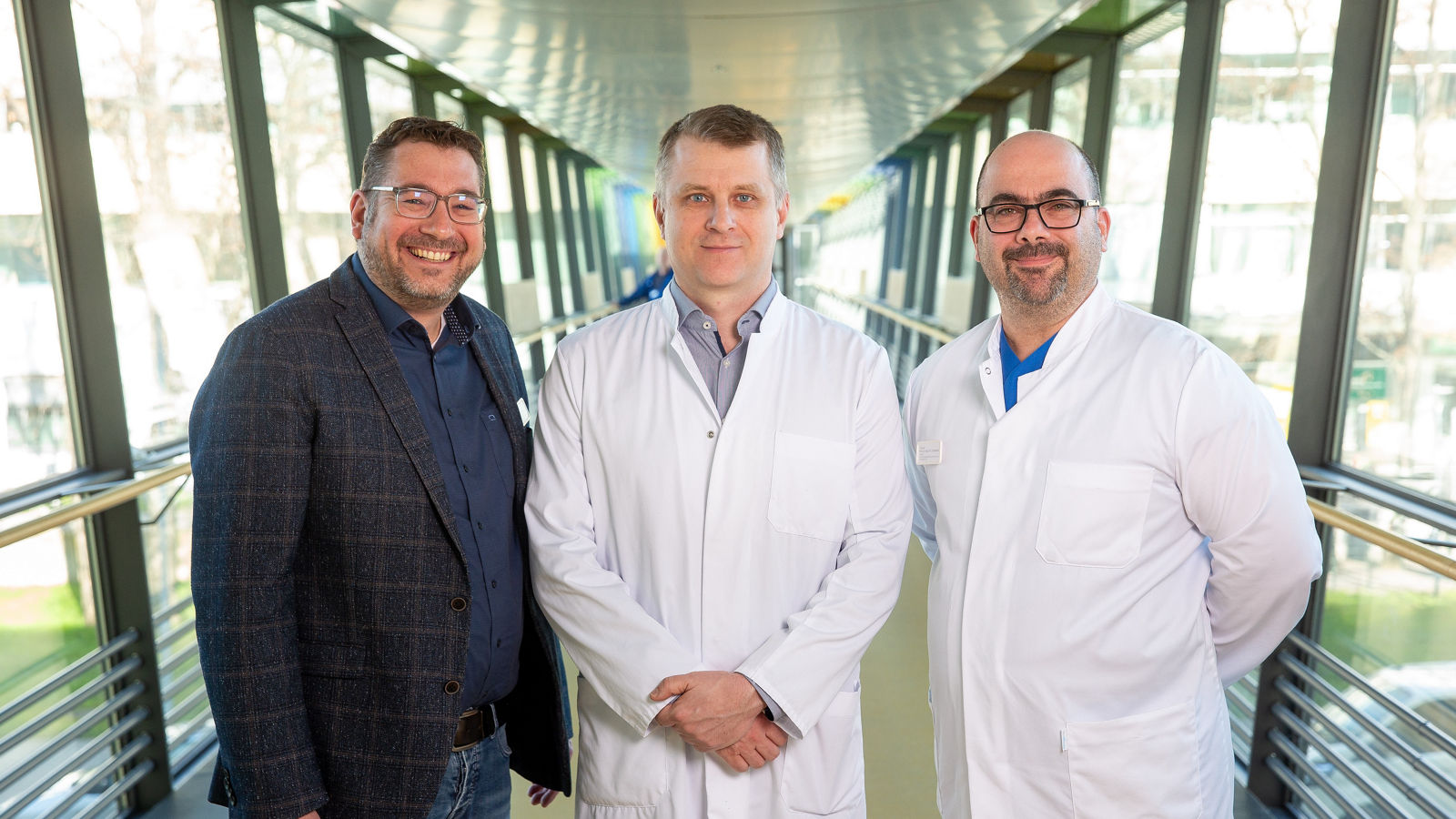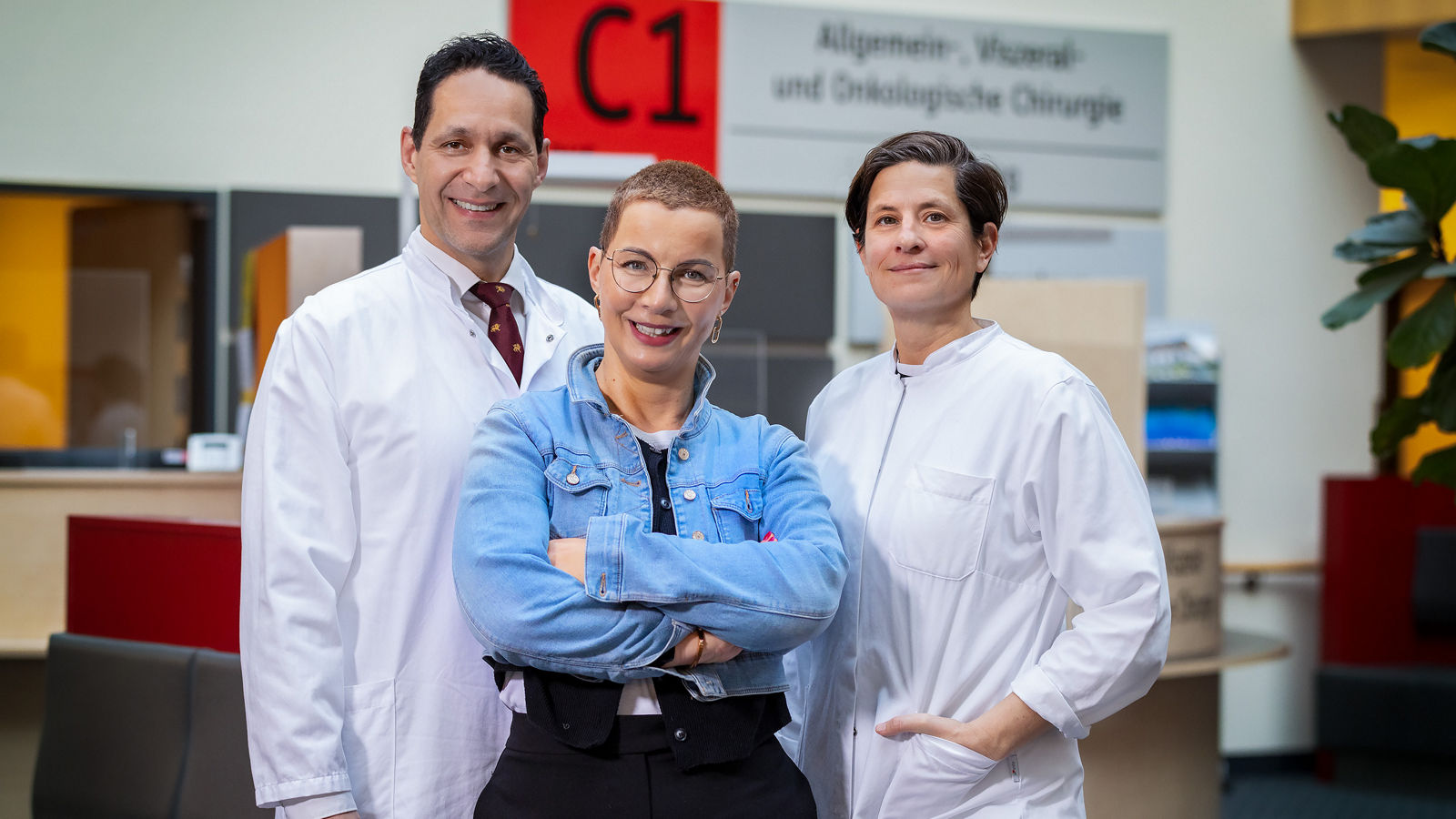Robotic surgical systems set new standards
A robot behind the operating table: at first glance, this sounds weird. However, statistics show that robotic surgical systems are of great benefit to patients and doctors. Helios Hospitals are implementing the state-of-the-art da Vinci system.
Successful Interventions with DaVinci Robots
Robot DaVinci has assisted visceral surgeons and urologists in more than 100 interventions at St. Johannes Helios Hospital. in Duisburg The result for the patients is unambiguously positive. Currently, the next departments, such as gynaecology and thoracic surgery, are being trained to operate the panel.
High-tech medicine against cancer: a new robotic surgeon helps with operations
He has four arms, is much more mobile and can see ten times better than a human: meet the new colleague — da Vinci Xi. The robotic surgeon supports medical doctors at the Amper Hospital. Thus, Dachau now houses the most modern robotic system of its kind in the whole of Upper Bavaria.
Certified Visceral Oncology Centre in Erfurt
The Helios Hospital Erfurt announces successful recertification of the Pancreatic and Colon Cancer Therapeutic Centre. For the first time ever, the Gastric Cancer Therapeutic Centre was certified as one of two hospitals in Thuringia.
New endoscopic procedure at Helios Duisburg-Homberg
New endoscopic procedure at Helios Duisburg-Homberg - Removing tumors in the stomach wall without surgery
Helios Hospital Duisburg: Colorectal Cancer Center receives highest award
The Colorectal Cancer Center at the Helios St. Johannes Clinic has been certified by the German Cancer Society. It certifies that the Hamborn site is of particularly high quality in the treatment of patients with colorectal tumors.
Helios Wuppertal: Prof. Florian Gebauer new Director of Clinic for General & Visceral Surgery
The Clinic for General and Visceral Surgery at Helios University Hospital Wuppertal is now under new management: Prof. Dr. med. Florian Gebauer has been Clinic Director since December 1, 2022, replacing Prof. Dr. med. Hubert Zirngibl, who will remain with the hospital as Chief Physician until the end of the year and as Senior Consultant from the new year.
Helios Krefeld: 1 hospital, 3 locations - Best treatment options through specialization and network
Helios Hospital Krefeld, Helios St. Josefshospital Uerdingen and Helios Cäcilien-Hospital Hüls will operate as one hospital under the umbrella of Helios Hospital Krefeld GmbH from January 2023. In terms of the number of inpatients, Krefeld thus currently has the largest hospital in North Rhine-Westphalia.
Helios Hospital Emil von Behring: German Cancer Society Confirms High Quality of Treatment
The Visceral Oncology Center of the Clinic for General, Visceral and Minimally Invasive Surgery headed by Prof. Dr. med. Marc H. Jansen consists of a certified colorectal cancer center and a certified pancreatic cancer center. There are only eight of these specialized facilities in Berlin. With the renewed successful systematic review by the German Cancer Society (DKG), the clinic demonstrates - in the truest sense - excellent treatment quality.
New chief physician at Helios Hospital Berlin-Buch: Prof. Dr. med. Roger Wahba
With Prof. Dr. med. Roger Wahba, the Department of General, Visceral and Oncological Surgery at Helios Hospital Berlin-Buch has a new chief physician since August 14, 2023. He succeeds Prof. Dr. med. Martin Strik. Prof. Dr. med. Wahba was most recently Managing Senior Physician at the Clinic for General, Visceral, Tumor and Transplant Surgery at the University Hospital of Cologne and from now on will be applying his extensive expertise and many years of experience at Berlin's most modern hospital.
Hypothyroidism: Symptoms in women
Almost every tenth woman suffers from hypothyroidism. This means that women are affected by this disease significantly more often than men. Our head physician at the Clinic for General and Visceral Surgery at the Helios Hospital Rottweil explains which symptoms apply to women in particular and what patients should look out for.
Back to everyday life with a stoma
Life with an artificial bowel outlet seems unimaginable to many, but for around 200,000 people, a stoma is part of their everyday life. It is usually the result of a serious bowel disease. To mark World Stoma Day on October 2, the Visceral Oncology Center at Helios Park-Hospital Leipzig is providing information about life with a stoma and insights into the emotional world of stoma patients.
Helios Hospital Duisburg: Colorectal cancer center once again honored for its high quality
In an important interim audit by the German Cancer Society, the Helios Colorectal Cancer Center in the north of Duisburg once again achieved excellent results - the commission was particularly impressed by the modern surgical procedures and the low complication rate.
Diagnosed with colorectal cancer? Diagnostics and therapy increasingly improve chances of survival
In Germany, around 61,000 people are diagnosed with a malignant bowel tumor every year. Thanks to optimized diagnostic and treatment options, a colorectal cancer diagnosis does not have to be a death sentence. At the certified Helios Colorectal Center Berlin-Buch, patients are successfully treated by interdisciplinary specialists with a high level of expertise and excellent equipment.
Helios Berlin-Buch: Minimally invasive endoscopic surgery without neck scar - ABBA method
Helios Hospital Berlin-Buch offers thyroid patients the so-called ABBA method (Axillo-bilateral-breast approach). The special feature of this method is that there is no incision on the neck at all. There is therefore no visible scar there later. Saskia Maier from Stendal, Saxony-Anhalt, traveled to Berlin-Buch especially to have her enlarged thyroid nodule removed using this method. The Helios Hospital Berlin-Buch is one of the few hospitals in Germany to offer this complex keyhole surgery.
New focus on dialysis access surgery: lifeline for dialysis patients becomes a top priority
With Dr. med. Tobias Steinke as the new head physician, the vascular medicine center at Helios Hospital Krefeld is setting a special focus for patients with chronic kidney disease requiring dialysis. Born in Essen, he is one of the leading specialists in the field of dialysis access surgery. He laid the foundations for his later medical career at Lutherplatz.
Helios Berlin-Buch: Successful treatment of liver metastases with surgical ALPPS procedure
Prof. Dr. med. Roger Wahba is an expert in the field of liver surgery and has been Chief Physician of General, Visceral and Oncological Surgery at Helios Hospital Berlin-Buch since August 2023. He has now performed an ALPPS operation (Associating Liver Partition and Portal Vein Ligation) here for the first time, successfully treating a 44-year-old patient. All of the young mother's liver metastases were removed in a two-stage surgical procedure. The major liver surgery operation marks a new approach to liver surgery at Helios Hospital Berlin-Buch and probably saved the patient's life.
Hanseklinikum Stralsund: IRE - Irreversible electroporation
The Helios Hanseklinikum Stralsund is one of only a few clinics worldwide to offer Irreversible Electroporation (IRE) with Nanoknife for advanced pancreatic cancer. We have treated well over one hundred patients since 2015.
General and Visceral Surgery in Erfurt awarded as reference center for surgical endoscopy
Our department is one of only two clinics in Germany to be certified as a "Reference Center for Surgical Endoscopy" by the German Society for General and Visceral Surgery (DGAV).
Erfurt: New head physician for general and visceral surgery, visceral oncology center
Attila Dubecz took over the position of Chief Physician. He is a proven expert in the field of robotic surgery.
Finally cancer-free without surgery: new treatment options for colorectal cancer patients
At the beginning of 2022, 49-year-old Jeannette von Brietzke was diagnosed with a tumor in her rectum. During her treatment at Helios Hospital Berlin-Buch, Prof. Dr. Roger Wahba and his team were able to use organ-preserving therapy with intensified radio-chemotherapy and thus avoid a major operation with an artificial anus. This was possible thanks to the new "watch-and-wait concept" following total neoadjuvant therapy (TNT) for rectal cancer and close follow-up care. With her story, Jeannette von Brietzke wants to give other sufferers courage and confidence - and show that surgery can help even without an operation.
